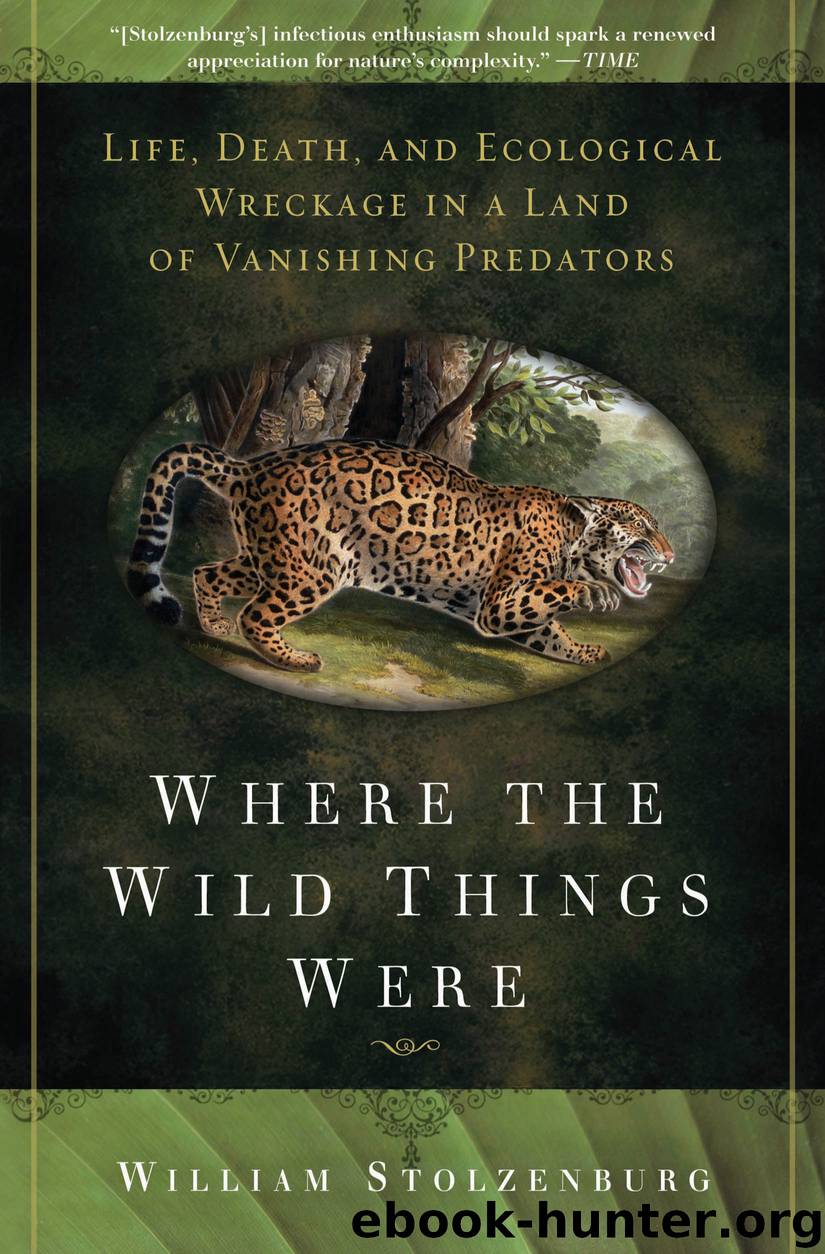Where the Wild Things Were by William Stolzenburg

Author:William Stolzenburg
Language: eng
Format: epub, mobi
Publisher: Bloomsbury Publishing Plc
Published: 2008-09-01T04:00:00+00:00
In 2003, Ripple and Beschta went to press with their first Yellowstone collaboration, delving more deeply into the beginnings of the willow’s and cottonwood’s recovery and honing their case for fear as a dominant force. Introducing their “terrain fear factor,” they suggested there were natural incongruities on the land that had kept the elk from dallying too long, which in turn had spared the saplings. There were gullies and terraces, islands and fingers of land jutting in the stream. These were the same places where the willows and cottonwoods had finally begun to show signs of recovery—places that an elk in a land of wolves did not want to be caught dead.
Fear so neatly answered the question of why thirty years of sporadic gunning by park rangers had not accomplished what a half decade and a hundred wolves apparently had. A few sporadic weeks of rifle fire left the riverside unguarded the rest of the year. But for elk in a neighborhood patrolled full time by wolves, every minute lounging in the river bottom involved a gamble of lethal stakes. It wasn’t so much a change in elk numbers as it was a change in elk attitude.
The streamside forests, in modest little spurts, were reawakening, thanks to what appeared to be a healthy dose of fear. In one of the greening tributaries of the Lamar, a beaver colony had set up shop, bringing along its busy waterborne commerce of wildlife. It was the first beaver colony in many years on the Northern Range, and the first of nine more to come within the wolf’s first decade back. It was as if a seventy-year winter had finally broken, giving way to springtime in Yellowstone.
Ripple and Beschta followed with a stream of reports, each building on the last, emboldened by the ever escaping willows of Yellowstone, and but-tressed by a swelling literature of top-predator ecology. Fellow biologists from as far afield as Russia were reporting similar cascades triggered in the absence of top predators. Next door in Grand Teton National Park, where the wolf and grizzly and hunting human had been missing for many years, the moose densities had quintupled, and their gnawings had left the park with a battered riparian forest missing several of its native nesting songbirds—songbirds that soon returned as the first wolf packs ventured down from Yellowstone. Farther up the Rocky Mountain chain, from the Canadian national park of Banff came a report of willows, aspen, beavers, and songbirds more commonly frequenting areas more heavily stocked with wolves. From Jasper National Park, near Banff, came news suggesting the recovering wolves there were coinciding with a twenty-foot spurt of fresh aspens.
Download
Where the Wild Things Were by William Stolzenburg.mobi
This site does not store any files on its server. We only index and link to content provided by other sites. Please contact the content providers to delete copyright contents if any and email us, we'll remove relevant links or contents immediately.
Sapiens: A Brief History of Humankind by Yuval Noah Harari(13991)
The Tidewater Tales by John Barth(12393)
Mastermind: How to Think Like Sherlock Holmes by Maria Konnikova(6937)
Do No Harm Stories of Life, Death and Brain Surgery by Henry Marsh(6687)
The Thirst by Nesbo Jo(6439)
Why We Sleep: Unlocking the Power of Sleep and Dreams by Matthew Walker(6357)
Life 3.0: Being Human in the Age of Artificial Intelligence by Tegmark Max(5189)
Sapiens by Yuval Noah Harari(5123)
The Longevity Diet by Valter Longo(4859)
The Body: A Guide for Occupants by Bill Bryson(4584)
The Rules Do Not Apply by Ariel Levy(4524)
The Immortal Life of Henrietta Lacks by Rebecca Skloot(4257)
Why We Sleep by Matthew Walker(4190)
Animal Frequency by Melissa Alvarez(4150)
Yoga Anatomy by Kaminoff Leslie(4103)
The Hacking of the American Mind by Robert H. Lustig(4086)
All Creatures Great and Small by James Herriot(3986)
Barron's AP Biology by Goldberg M.S. Deborah T(3944)
Double Down (Diary of a Wimpy Kid Book 11) by Jeff Kinney(3927)
